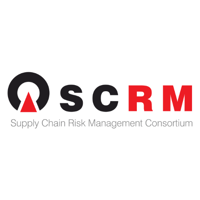Not all supply chain risks are created equal.
Question One - Why are Supply Chain Risks Occurring

When organizations outsource, they often believe they’re transferring work.
In reality, they’re also transferring risk.
And without the right structures, that risk can quietly grow beyond their control.
Outsourcing has delivered major advantages over the last three decades: cost reduction, access to expertise, and operational flexibility.
But these benefits often come with hidden exposures.
Common outsourcing-related risk drivers include:
- Geographical dispersion, increasing vulnerability to geopolitical and natural disruptions
- Loss of direct control over quality, compliance, and timelines
- Visibility gaps, especially across Tier 2 and Tier 3 suppliers
- Misaligned objectives between buyers and suppliers
The issue isn’t outsourcing itself—it’s the lack of effective risk governance and visibility around outsourced operations. When disruptions hit, these blind spots can quickly become critical vulnerabilities.
Proactive identification, assessment, and mitigation are essential, not only for internal operations but for every link in the extended network.

Many organizations turned to low-cost countries to reduce expenses and remain competitive.
On the surface, the strategy delivers clear financial benefits.
But beneath the cost savings lies a complex web of risks that can easily be underestimated.
Low-cost country sourcing often introduces:
- Extended and fragile transportation routes vulnerable to geopolitical tensions and natural disruptions
- Longer lead times that reduce agility and buffer capacity
- Limited visibility into upstream suppliers and subcontractors
- Regulatory and infrastructure differences that complicate issue resolution
- Cultural differences, ethics and local customs
Cost advantages can disappear quickly when disruptions occur.
Savings on paper often mask increased exposure across the network.
Organizations need to balance cost objectives with resilience strategies, ensuring that sourcing decisions don’t trade short-term gains for long-term vulnerabilities.

Lean and JIT strategies have transformed supply chains, improving efficiency, reducing waste, and driving significant cost savings.
But these models were designed for stable, predictable environments. Not the volatile, uncertain world we operate in today.
The very strengths of Lean and JIT can become weaknesses during disruption.
Key risk drivers include:
- Minimal inventory buffers that leave little room to absorb shocks
- Highly synchronized production and delivery schedules vulnerable to delays
- Increased dependency on precise timing and flawless execution across multiple partners
- Limited resilience measures built into operational design
When everything runs smoothly, Lean and JIT deliver exceptional performance. When disruptions hit, they can magnify the impact quickly.
A single delayed shipment can ripple through the network, halting production and service.
Efficiency should not come at the expense of resilience.
Organizations must rethink how lean principles coexist with modern risk realities.

Consolidating the supply base has long been seen as a way to increase purchasing power, streamline management, and strengthen relationships with key suppliers.
However, excessive rationalization can unintentionally concentrate risk.
Key exposures that emerge when supply bases shrink include:
- Over-reliance on a small number of suppliers or geographies
- Reduced flexibility and sourcing alternatives during disruptions
- Limited capacity to respond to sudden demand changes or emergencies
- Vulnerability to a supplier’s financial, operational, or geopolitical challenges
While rationalization can improve efficiency, it can also remove critical layers of redundancy and diversification.
Organizations must strike a balance between strategic consolidation and maintaining a resilient, flexible supply network.
___________________________________________________________________________
If you're interested to know more about supply chain risks and how to identify, assess, mitigate and manage them, please visit our education academy, Edukazi, at www.edukazi.com to view our online Supply Chain Risk & Resilience program, consisting of 3 levels.



